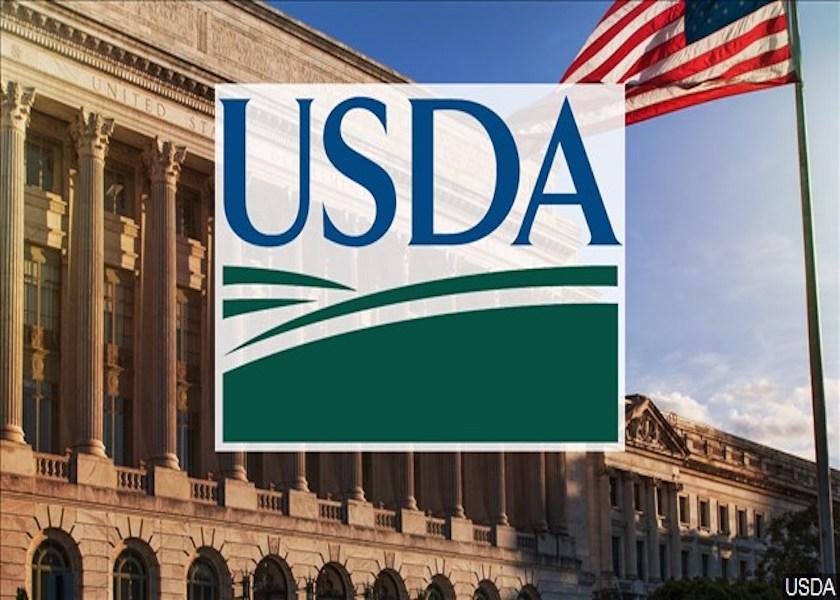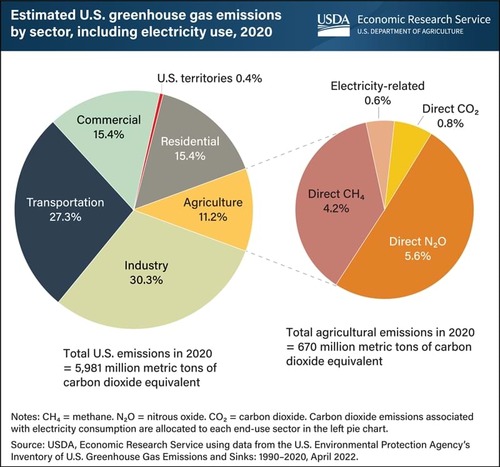New Data Shows Ag’s Climate Footprint is Shrinking

The Biden administration’s initiatives to cut greenhouse gas emissions in half by 2030 are well underway.
New year-over-year data shows ag is playing its climate smart part in multiple ways.
According to the USDA, 2020 farming activities in the U.S. made up 11.2 percent, or 670 of 5,981 million metrics tons, of the U.S.’s total carbon contribution.
This data indicates a decrease in American ag’s carbon footprint from 2019 to 2020, dropping from 699 to 670 million metric tons of carbon dioxide.
USDA data shows ag’s greenhouse gas contributions are made up of:
• Nitrous oxide = 5.6%
• Methane = 4.2%
• Carbon dioxide = 0.8%
• Electricity = 0.6%
The Department of Ag notes fertilizer application, manure management and animal food digestion are some of the sources in American ag’s carbon contributions.

Outside of ag, the U.S. Energy Information Administration’s defines four other economic sectors that contribute to the U.S.’s greenhouse gas tally, including:
• Industry – 30.3%
• Transportation – 27.3%
• Commercial – 15.4%
• Residential – 15.4%
While ag’s carbon contribution went down in 2020, USDA says its share of carbon emissions in the U.S. economy did go up from 10.6 percent to 11.2 percent.
More on climate:
Is the U.S. Prepared to Support Electric Vehicles?
How Climate Change Amplifies Damage from Invasive Species
Come On In: The Ocean Temperatures Are Hot







